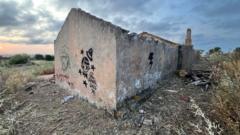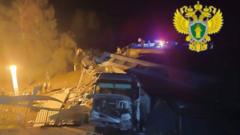Selam Gebrekidan and Joy Dong, reporters for The New York Times, delve deep into a sprawling money laundering network based in Southeast Asia, uncovering the processes and players involved.
Unmasking the Shadows: Inside the World of Money Laundering in Southeast Asia

Unmasking the Shadows: Inside the World of Money Laundering in Southeast Asia
Investigation reveals the complexities of a major money laundering network operating in Sihanoukville, Cambodia.
In a recent investigative report, Selam Gebrekidan, an investigative journalist for The New York Times, along with Joy Dong, has shed light on a vast and complex money laundering operation rooted in Sihanoukville, Cambodia. For months, Gebrekidan transformed her Hong Kong apartment into a makeshift investigation hub, where diagrams and notes covered the walls, encapsulating the intricate web of scams perpetuated by an elusive network.
This particular investigation was initiated nearly nine months ago, sparked by numerous tips highlighting Sihanoukville as a burgeoning hotspot for scamming and money laundering in the wake of the pandemic. The reporters engaged with multiple insiders from the criminal underworld, clarifying the often convoluted laundering process, which they aimed to present in an accessible manner for their audience.
Reflecting on her experience, Gebrekidan noted the haunting presence of numerous unfinished buildings in Sihanoukville—each night, fluorescent lights flickered in abandoned upper floors, prompting her to wonder, “Who is up there? What are they doing?” This condition only deepened her resolve to understand the mechanisms behind financial crimes that exploit vulnerable individuals in the region.
During a video conference, Gebrekidan and Dong shared insights from their discussions with scammers and money launderers, emphasizing the persistence of questions that linger even after the investigation. With their detailed narrative, they aim not just to unveil the practices of these criminals but to also comprehend the environment that cultivates such illegal activities.
Ultimately, this report serves as a compelling piece reflecting on the clandestine operations that intertwine with commercial fronts, posing deeper questions about the governance and regulation of such regions post-pandemic.




















